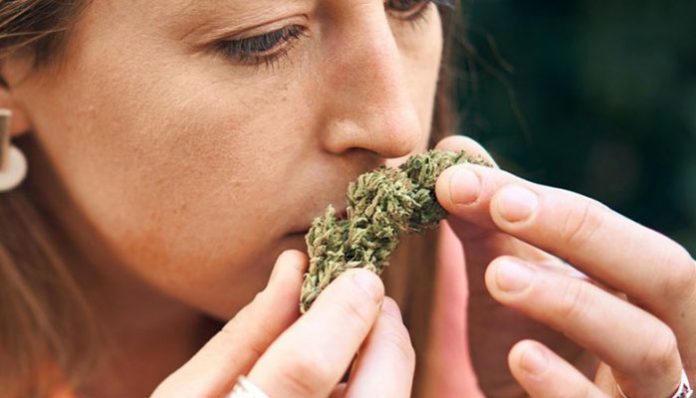Cannabis plants are cultivated all around the world for both recreational and medical purposes. These plants are incredible, and not only do they offer a high amount of CBD, but the plants also contain THC, which has several health advantages, including relaxation and depression alleviation.
Growing your own cannabis can be quite satisfying and cost-effective. Cannabis seeds and cannabis plants come in a variety of different strains. You can also purchase or make cannabis clones.
Some have stronger therapeutic properties than others, and some produce better highs. But when it comes to determining the quality of your bud, there is one factor that trumps them all: curing.
In this post, we cover the ins and outs of curing marijuana. By the end of this article, you’ll have a good idea of what it means to cure your buds and the advantages of cured buds over freshly harvested buds.
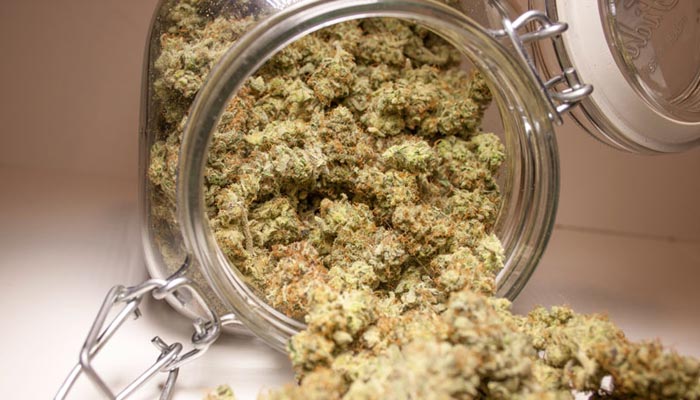
What is Curing?
Curing in the cultivation space means to dry, age, and cure cannabis over time. Curing marijuana slows the process of THC degradation that would normally occur when your buds are kept in dark, humid conditions.
After your plant is harvested, the humidity will begin to decline in the curing process which helps with preventing mildew growth.
As far as the growing stage is concerned, curing can be done over a period of time in order to increase the quality of the final marijuana product.
The process of curing has two objectives: activating THC and preserving trichomes. Curing cannabis increases the potency of your bud with regards to terpenes, cannabinoids, and flavor profiles.
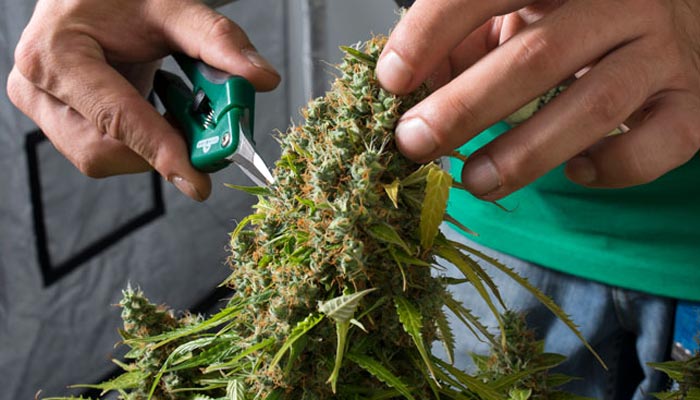
A Perfect Cure Every Time for Enhanced Flavor & Smell
Curing weed after harvesting and drying will not only add to its potency but also improve the taste and smell. You can cure your cannabis at home with just a little preparation ahead of time.
Many people avoid curing their pot because they are under the false impression that a quick dry is a shortcut. They’re definitely missing out on the high levels of quality, particularly in terms of fragrance, taste, and efficacy.
Curing cannabis removes chlorophyll and breaks down some of its sugars, creating smoother smoke. It also helps improve the potency of your bud. But we’ll cover more on that later in this post.
The longer your ganja is left in a curing environment, the more potent and complex it becomes. Curing affects flavor and aroma positively!
Curing bud isn’t difficult. But it does require some attention. You’ll need to keep an eye on your dried buds as they are being cured so that you can see how they are progressing. If you don’t, there’s a good chance all of your hard work will be for nothing.
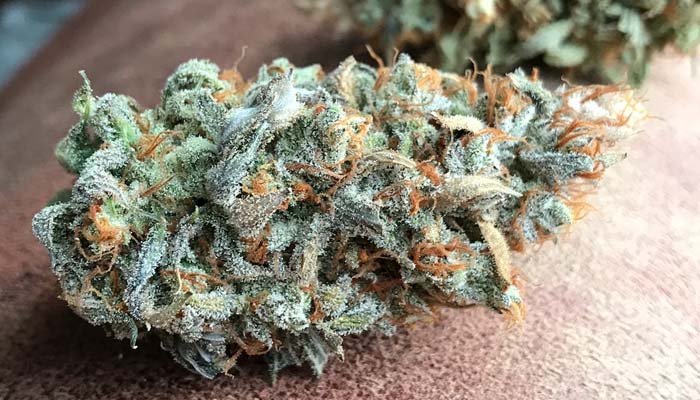
What Does Curing Cannabis Do?
Weed has a better flavor and smell and overall quality when it’s properly cured, which can be characterized as having depth, richness, and potency.
If you want your freshly harvested cannabis to turn into tasty buds, you need to know the drying and curing process. Harvested cannabis cannot be smoked right away, it has to go through the drying process first. Then curing cannabis will add subtle flavors to it like fine wine.
Uncured buds are harsher on the throat and lungs when inhaled. This can be traced to large amounts of chlorophyll in the weed. Curing reduces the chlorophyll level in buds, making them taste smoother when smoked.
Curing ganja buds for longer periods of time allows them to mellow out even more. This mellowing effect can lead to a sweeter-tasting plant that also has a better scent. The THC becomes more potent during this curing process as well.
Well-cured flowers may be kept in an airtight container in a cool, dark place for up to two years without losing their potency. A good cure also allows you to keep marijuana for longer periods without worrying about mold or cannabinoid or terpene deterioration.
As you can see, there are many reasons to cure buds properly instead of smoking them right after drying.

The Science Behind Curing Cannabis
Cannabis contains more than 400 chemical compounds, with more than 60 of them being cannabinoid chemicals. The very first compound isolated in pure form from the plant was cannabinol. The second compound found was cannabidiol (CBD). Then delta-9-tetrahydrocannabinol (d-9-THC) was discovered.
Cannabinoids are generated in the plant and accumulated as cannabinoid acids, but when the herbal product is dried, cured, and heated, the acids decarboxylate gradually into their appropriate forms, such as CBD or Delta-8-THC. The cannabinoids will continue to develop as long as any moisture or oxygen is remaining in the plant.
The buds will have a greater cannabinoid content and therefore higher potency if they are kept at an appropriate temperature and humidity throughout the curing process.
All of the superfluous sugars and starches that were previously broken down by chlorophyll are destroyed by aerobic bacteria and enzymes present in the plant matter. When these residual components are used up, you’ll be left with your strain’s unique terpene profile.
In fact, it’s chlorophyll and its byproducts that give that harsh and grassy flavor to weed that has not been properly cured. Curing marijuana buds for too short of a time, or at the wrong temperature will result in less flavorful weed with an unpleasant smell and harsh smoke.
Curing helps preserve the terpenes and the cannabinoids by slow evaporation. It also reduces the risk of side effects such like paranoia and anxiety. When buds are cured at the correct temperature and humidity level, they will have a greater cannabinoid content, superior taste, and enhanced potency.
Remember, what’s done to your marijuana while curing greatly affects how it will taste, how it will burn, and the overall quality.
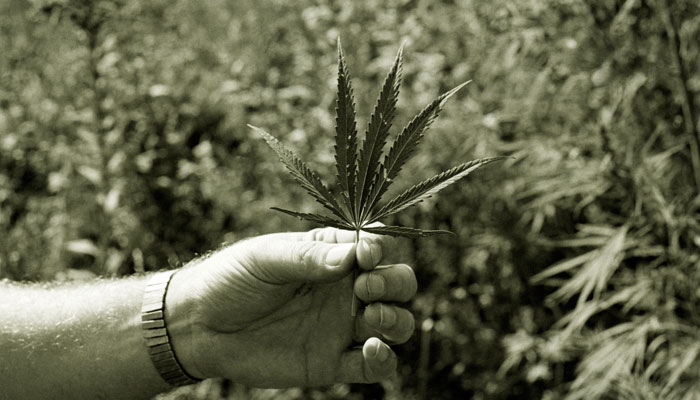
A Bit About The History of Marijuana Plants BC – Before Curing
Marijuana has a long history, dating back thousands of years. The plant’s cultivation dates back several millennia. Cannabis agriculture is documented in Chinese records dating from the 28th century B.C.E.
Cannabis plants include hundreds of chemicals, with 109 of them being cannabinoid compounds. Of course, THC is one of these cannabinoids, and it’s the most well-known for inducing marijuana’s cognitive effects.
The amount of THC and other cannabinoids in the plant varies depending on cultivation techniques, plant genetics, and post-harvest processing.
There are three main types of cannabis plants with psychoactive effects: Cannabis sativa, Cannabis indica, and Cannabis ruderalis. The flowers of these plants, when picked and dried, are some of the world’s most popular drugs. Some people refer to it as marijuana while others call it cannabis, grass, or even ganja.
Cannabis plants are either male or female, and the flowers they produce are where the compounds are found in the highest concentrations. The female flower has a strong aroma, while the male flower isn’t quite as aromatic. The majority of cannabis grown today is feminized, meaning that it’s developed without pollination from a male plant
Cannabinoids are the compounds that make up cannabis. There are hundreds of them, and they affect the body’s endocannabinoid system. But the two that we all know well are cannabidiol (CBD) and tetrahydrocannabinol (THC).
Cannabidiol (CBD)
Cannabidiol (CBD) is a non-intoxicating, non-euphoric cannabinoid that has been shown to have multiple medical uses. It’s a psychoactive cannabinoid, but it’s not intoxicating or euphoric, so you won’t get “high.” It’s commonly used to treat inflammation and pain. It might also treat seizures, psychosis, and anxiety.
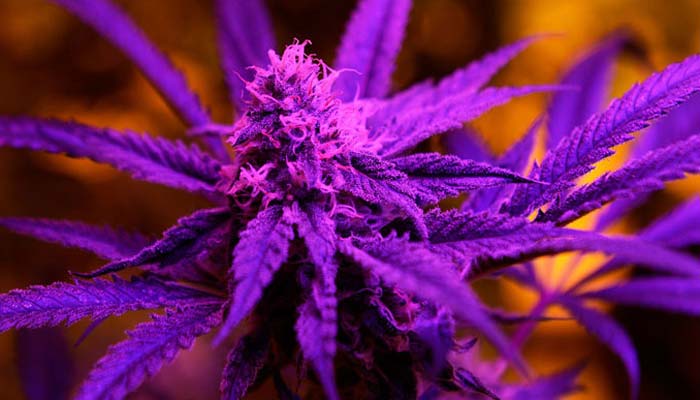
Tetrahydrocannabinol (THC)
Tetrahydrocannabinol (THC) is the most common cannabinoid in marijuana plants. It’s responsible for the high that users experience when they’re smoking weed or hashish. It also has medical applications. For example, it may help people struggling with nausea or loss of appetite due to chemotherapy or chronic disease. It also seems to help people who suffer from insomnia as well as those struggling with pain and muscle spasms.
More on Cannabinoids
Cannabinoids produce a wide range of effects on the body, from appetite regulation to modulating inflammation and nausea. Though most people think of the cannabinoid tetrahydrocannabinol (THC) when they hear the word “marijuana,” it’s actually a combination of cannabinoids and terpenes that have psychoactive effects.
Terpenes are fragrant oils that give cannabis and other plants their unique smell. They also interact with cannabinoid receptors in the brain to produce a wide range of medical effects, from anti-inflammatory and neuroprotective properties that can improve mood and pain relief.
Both terpenes and cannabinoids are highly volatile and might readily evaporate or change into less active compounds if left uncured, but the slow evaporation of moisture helps to fully preserve them.
As a result, cured buds will provide you with a significantly superior smoking experience – the distinct flavor of your strains will be much more noticeable, and the smoke won’t be harsh. The danger of experiencing negative side effects such as anxiety or paranoia will also be reduced, while your buds will last for months without molding or losing their potency.
Cannabis products may be found that contain solely CBD, THC, or a combination of both. However, dried flower that is popular among individuals who consume cannabis typically contains both cannabinoids and terpenes.

When to Cure Marijuana
The best time to cure marijuana is right after it has finished drying and trimming. You can tell when your weed is dry because the stems will snap rather than bend.
If you wait too long to cure your product, residual moisture could cause molding or mildew, which may be hazardous if smoked. Even though the plant might be dry, there’s still a chance that there’s enough moisture within the buds to cause this to happen.
If you can’t cure your marijuana right away, it’s a good idea to store the plant in a container with a humidity pack. This will help keep the relative humidity consistent until you’re ready to start curing it.
Drying and curing cannabis plants before long-term storage is just as important as cannabis cultivation itself. You won’t be able to achieve the results you want if you don’t understand the drying and curing methods.
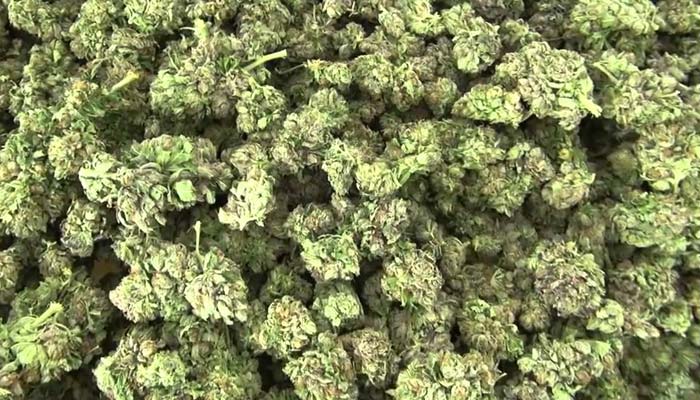
Drying Marijuana Before Curing
Before curing, it is critical that your bud be dried properly. Here’s a bit more about how to dry them.
Cannabis drying is the process of removing the majority of moisture from your buds. It makes storing for a long period much easier after this step because the chance of mold growing on the buds drops significantly when they’re dryer.
Properly drying your buds might improve their flavor and effect. At the same time, improperly dried weed can affect the taste and medicinal value.
Make sure to dry marijuana plants slowly and carefully, as this might take several days. The drying and curing procedure is time-consuming. It’s tempting to try to hurry things along, but only by spending time can you ensure excellent bud quality.
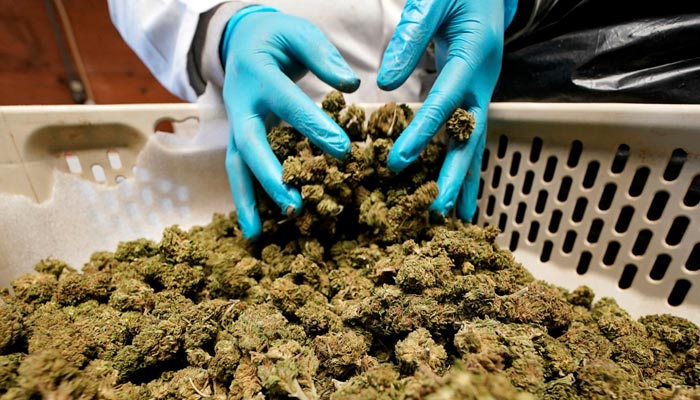
Preparing Drying & Curing Room
While a dedicated drying and curing area isn’t required, it does offer you more control. Before the harvest date, prepare the drying and curing space so that the harvested cannabis can remain in excellent condition while it waits to be dried.
A dark, ventilated location where cannabis plants or flat dry cannabis buds may be hung is required. But a drying rack, lines, or mesh to hang cannabis plants or flat dry cannabis buds are all equally useful tools.
You also may want to invest in a little fan, air-conditioning unit, or dehumidifier as these might come in handy. A hygrometer is also a good tool to monitor bud and grow room humidity.
The drying room should be simple to get to and check on them on a regular basis. During the drying process, you’ll need to monitor the temperature in the room where you’ve hung cannabis plants or flat dry buds. The ideal temperature range for cannabis is between 60° F and 75° F. At this temperature range, it’s best to keep the humidity between 45% and 60%.
You’ll need to monitor moisture content before you can be sure that they are ready for curing. Even after they are ready, you might want to let them sit for a little longer.

Trimming Your Cannabis Plants
Once you have harvested plants, trimming is the next step if you plan to do a wet trim because your area is overly humid. But you may want to dry your buds first if you live in an arid region.
Trimming cannabis is divided into two categories: wet trimming and dry trimming, or more simply, before and after the drying process.
The term “wet trimming” refers to the act of removing leaves from your cannabis while it is still slightly moist before drying and curing harvested cannabis. Curved spring-loaded trimming scissors are recommended. Wet-trimmed buds are faster to dry than dry-trimmed buds, which is why this is ideal in moist climates.
Some prefer trimming dry marijuana because it is less sticky. This process is called “dry trimming” and is performed after the drying process. Since the dried leaves are smaller and more difficult to cut, the dry trimming might be a bit more difficult to perform.
As covered before, if you’re in a high-humidity environment, wet trimming is advised since mold will most likely develop if it isn’t.
Remove the fan leaves and the larger sugar leaves. Without the leaves, wet trimmed buds dry more rapidly than untrimmed buds.
Do not forget to collect plant material for creating other items like marijuana butter and extracts. Leaves have cannabinoids, but not as much as buds.
To collect the leaves, just place a tray beneath plant material whether you choose wet trimming or dry trimming.

Initial Drying Phase
Drying buds in a dark place to preserve the quality. Many growers hang them or place them on a drying rack in their basements or their garage.
However, if your basement has a damp, musty odor, it’s possible that the humidity is too high. Get a hygrometer to check the humidity level before deciding where to dry your cannabis buds to prevent mold from developing.
To achieve the appropriate temperature and humidity levels in your grow area, you may need a fan, a dehumidifier, or an air conditioner. Because using any sort of heating system might damage the flavor of your marijuana, avoid doing this.
If drying buds in your room takes too long, change the temperature or humidity to help it along.
If you’re going to dry trim your marijuana plants, hang them upside down by the stems. Do not hang the entire plant upside down; it is much easier to hang buds by the branches, spread them apart for adequate circulation.
After wet trimming, buds can also be dried on a mesh screen on a drying rack. The mesh should be smaller than the buds; for example, cheesecloth would work.
To minimize mold accumulation, make sure the mesh is easy to clean.
Allow for plenty of air circulation when drying, since this will help to prevent buds from molding. When flat drying, turn the buds frequently to ensure that they dry evenly.

How to Tell if Cannabis Buds are Dry
There is a simple test to determine if your buds are dry: attempt to bend a tiny stem. If the tiny stems break, your buds are dry, and you’re ready to move on to the curing process. If they bend but don’t break under the strain of your fingers, allow them to dry for longer.
The drying time of marijuana buds is determined by a variety of factors. If you live in a more arid region with less humidity, the process will go much quicker than if you reside in an area where the air is more humid.
The size of your buds will obviously have an impact on how quickly they dry since larger, more solid buds will take longer to dry than smaller, less dense ones. In general, drying takes 7-12 days, depending on the drying technique and humidity levels.

Preparing for Curing Marijuana
The curing process begins right after proper drying. You can use the same space you dry cannabis to cure your cannabis.
You’ll need some airtight containers. Some prefer quart-sized glass mason jars. But any airtight glass containers will do.
Plastic bags tend to trap moisture inside and does not allow adequate oxygen circulation. When plastic bags comes into contact with terpenes and oils in the buds, it has the potential to break down, potentially contaminating your crop with microplastic.
In addition to a thermometer to measure temperature, you’ll need a hygrometer, which is an instrument used for measuring humidity. They can be bought at any store that sells instruments like this (like Home Depot or Lowe’s), as well as online through websites like Amazon (or eBay).

How to Cure Marijuana: The Curing Process
Marijuana is cured in a controlled environment in traditional curing, sometimes known as air curing. The controlled setting we use here is the airtight containers. Curing marijuana should be done in a dark environment. To preserve cannabinoids, keep the curing containers out of direct light.
The containers will provide just the right humidity due to the moisture remaining in the plant if your marijuana was dried correctly. Your jars should be kept at approximately 70°F (21°C). Keep a thermometer nearby to measure temperature. A hygrometer may be used to verify that your jars maintain 60-65% humidity levels, with the optimal humidity of 60%.
Put the dried and trimmed cannabis flowers into airtight containers made of glass, such as glass mason jars. Fill the jars to about three-quarters full, leaving some space for air at the top. Close the lids tightly. This process will rehydrate buds on the outer part by drawing moisture from the center.
Then, after that, check the glass mason jars every day and open the lids for 30-45 minutes throughout the day to release trapped moisture and exchange air (also known as burping). This air exchange is necessary to prevent mildew, mold, and bacteria.
Both terpenes and cannabinoids are highly volatile and might readily evaporate or change into less active compounds if left uncured for extended periods of time, but the slow evaporation of moisture helps to fully preserve them.
As a result, cured cannabis will provide you with a significantly superior smoking experience – the distinct flavor of your strains will be much more noticeable, and the smoke won’t be harsh.
The danger of experiencing negative side effects such as anxiety or paranoia will also be reduced, while your cured cannabis will last for months without molding or losing their potency.

Curing Cannabis: Hygrometer & Relative Humidity
A hygrometer is a device for measuring the moisture content of the air. Indoor and outdoor versions are available, although they are typically designed for one or the other.
Relative humidity refers to the amount of water vapor in the air. It’s calculated by comparing the present humidity level to what would be predicted at 100 percent humidity (which is impossible since water does not evaporate at that rate). If the relative humidity is 50%, it indicates that half of the air in the space contains water vapor,
Cannabis can absorbs water from the air. If humidity levels are too high, mildew, mold, and bacteria can develop. In that case, use a dehumidifier or moisture absorber pouches to reduce the relative humidity.
How to Cure Marijuana & Rid It of Excess Moisture
If you can smell ammonia when opening the mason jars, it’s an indication that there is too much moisture and anaerobic bacteria are breeding. Leave the lid off for a day before closing it again. The ammonia odor should be gone from your marijuana flower after a day if it isn’t. You may need to trash your cannabis if this persists
If you live in an especially humid climate, using a dehumidifier can help you cure buds in high humidity curing. Moisture absorber pouches may be used in the jars with the buds to keep the moisture level inside at the recommended level.
If all else fails, there is still hope! You can put your moist weed in a jar with some desiccant, but this isn’t really ideal for large amounts of cannabis. Instead, try using a hygrometer and burping it every day to reduce the moisture.
Remember, the key to proper curing is patience. You may smoke your cured cannabis without worrying about the harsh smoke!
How Long It Takes to Cure Cannabis
The curing process will take some time, but if you want good results, it’s definitely worthwhile. The slow curing process gives the terpenes inside cannabis flower time to react with one another as well as infuse into their surroundings.
To ensure the greatest strength and flavor, your buds should be cured for at least 4 weeks. Perfect buds require a curing time of 6 to 8 weeks.
you live in a dry climate, the curing process may take even less time. If your cannabis is still moist or soft to the touch, store them in mason jars with lids off for another day or two.
Avoid over-burping may cause bud mold while under-burping can lead to ammonia contamination and/or too much chlorophyll.
As long as the cannabis is not moist or slimy or smells like ammonia, you can smoke it! Put your freshly cured weed in a mason jar and smoke away!
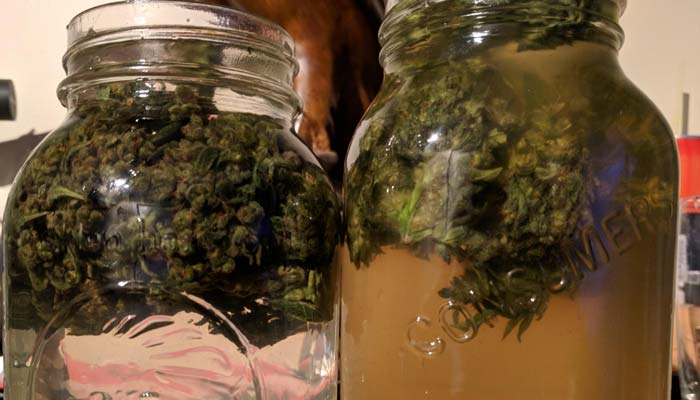
Water Curing Cannabis
Water curing (also known as wet curing) is another way to cure cannabis if you want your buds cured quickly and don’t mind the trade-off in quality and taste. This is done before the drying process.
In traditional air curing, you have to wait for buds to digest sugar and for oxygen in the air to break down the phytochemicals for weeks. But with water curing, you use water to wash out the sugar and chlorophyll before the drying process, which will take several days instead of weeks.
Since cannabinoids are fat-soluble and hydrophobic, they will not dissolve in water. You will not lose any cannabinoids while water curing.
Not every water-soluble component in cannabis is undesirable. Terpenes are soluble in water, which means this method will wash away the fragrant and tasty chemicals with the water.
Terpenes also have a synergistic effect with cannabinoids. So, your water-cured buds won’t be as potent as the air-cured ones.
Water Curing Process
For water curing, you would need some mason jars, drinking water, and freshly harvested buds.
Trim the buds and place trimmed buds in glass jars, put room-temperature water to cover the buds, close the lids, and shake the jars gently. Change the water every day and shake the jars daily for 5-7 days.
Water will absorb the water-soluble sugar and phytochemicals. After that, strain the cannabis and air dry them on the drying rack. Follow the drying process for flat drying.
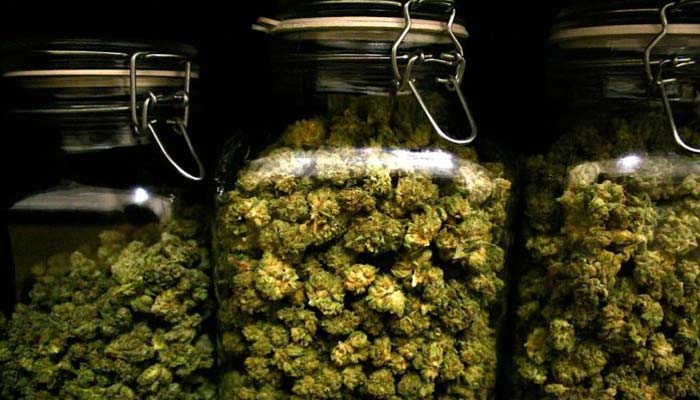
Storing Cannabis after Drying & Curing
You should store buds in a cool, dark place, similar to how you would keep fine wine.
Cannabis buds are vulnerable to UV light and excessive heat, which has the ability to damage both organic and inorganic components. The buds will deteriorate when exposed to harmful UV rays.
Labeling your jars with the name of the cannabis strain, THC and CBD content, and harvest date is a good idea. You don’t want to forget what’s in the jars when you have a variety of cannabis strains or mix them together.
For long-term storage, marijuana buds can be kept in a sealed container out of direct sunlight away from heat and moisture sources.
It’s a good idea to use a vacuum seal since it limits the amount of oxygen in the container. Oxygen is corrosive and causes the buds’ color to fade. Bacteria growth is also hampered as a result of this.
However, there are anaerobic bacteria that thrive in moist, no-oxygen environments with food and moisture. Make sure to remove all the moisture before sealing. Do not vacuum seal wet or damp buds!
Cannabis buds will keep their potency for approximately two years if properly stored.
If the buds dry out too much, add an orange peel to re-moisten them for a few hours then remove the peel. Mold may develop if the buds become too moist.

Recap How to Cure Marijuana
In a nutshell, curing cannabis is done after trimming and drying your harvested plants. Put dry buds in mason jars or other airtight glass containers. Fill the jars to about three-quarters full, leaving some space for air at the top. Close the lids tightly.
After that, check the jars each day and open the lids for 30-45 minutes a day to reduce the moisture (also known as burping). The best temperature and humidity for curing is 70° F and 60%.
In 4-8 weeks, your dry buds should be fully cured. Buds that have been properly cured will taste and smell better than dried buds, just as fine wine surpasses ordinary wine.
Concluding on Curing Cannabis
Knowing how to cure marijuana properly will elevate the quality of your bud from good to great. The longer you cure cannabis, the better it gets. Curing time may also vary based on climate conditions, of course.
To retain all of the chemicals and nutrients in the plant, it must be dried and cured gradually. If you take appropriate care while drying and curing cannabis, you’ll be able to produce higher-quality buds as a result.
If you haven’t been curing your buds, it might be a good idea to try it out. You’ll find that the buds are tastier, more fragrant, and much smoother when cannabis is cured properly compared to dried marijuana.
Since this method reduces chances of mold growing on your cannabis plants, you won’t need to worry about throwing away ruined weed. This will save you money in the long run.
Treat your cannabis buds right by following the simple steps and information outlined above to get the full benefits of curing!


